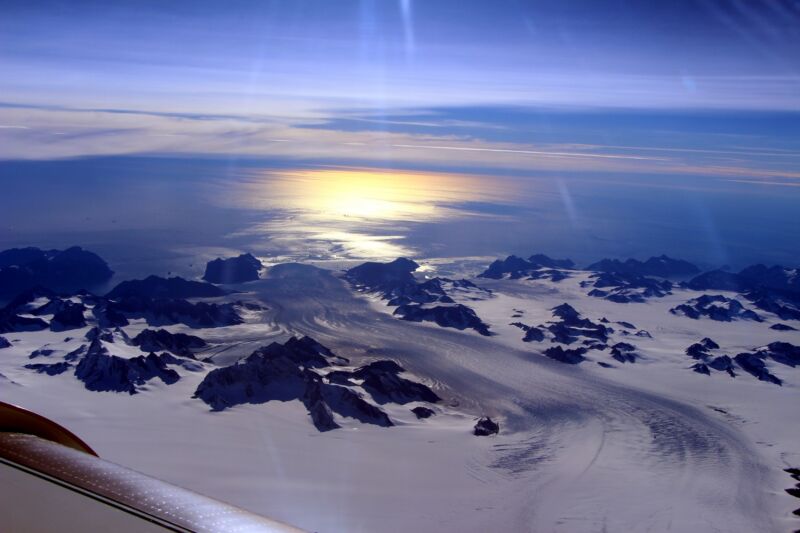Greenland may have already committed us to almost a foot of sea level rise

Enlarge / View from a survey flight over the Helheim/Kangerlussuaq region of Greenland. (credit: NASA/John Sonntag)
While it's possible to halt global warming by halting our greenhouse gas emissions, sea level rise is a consequence that keeps on giving. Great ice sheets like Greenland and Antarctica have tremendous inertia-they're slow to melt but carry on melting even after the thermometer stabilizes. There are many reasons for this, including complex processes beneath glaciers that control their rate of downhill flow. And this complexity makes projecting ice loss over the coming century-and centuries-exceptionally challenging.
In the face of this formidable complexity, a new study led by Jason Box at the Geological Survey of Denmark and Greenland opts for a simple approach to projecting Greenland's future. Rather than attempting to simulate as much physics and detail as possible in a model, the team used a simple equation to calculate what portion of the ice is vulnerable in the current climate.
Finding the lineGlacial ice deforms under its own weight, flowing outward and downhill like slow-motion pancake batter. The low elevation and-for an ice sheet like Greenland's-coastal environment at the ice's edge is much warmer, and ice melts away here even as snow accumulates over the colder interior of the ice sheet. The point where the net result changes from gaining mass to losing mass is called the "equilibrium line." Increase air temperatures, and this line will push up to higher elevations, exposing more ice to melting until the glacier shrinks.